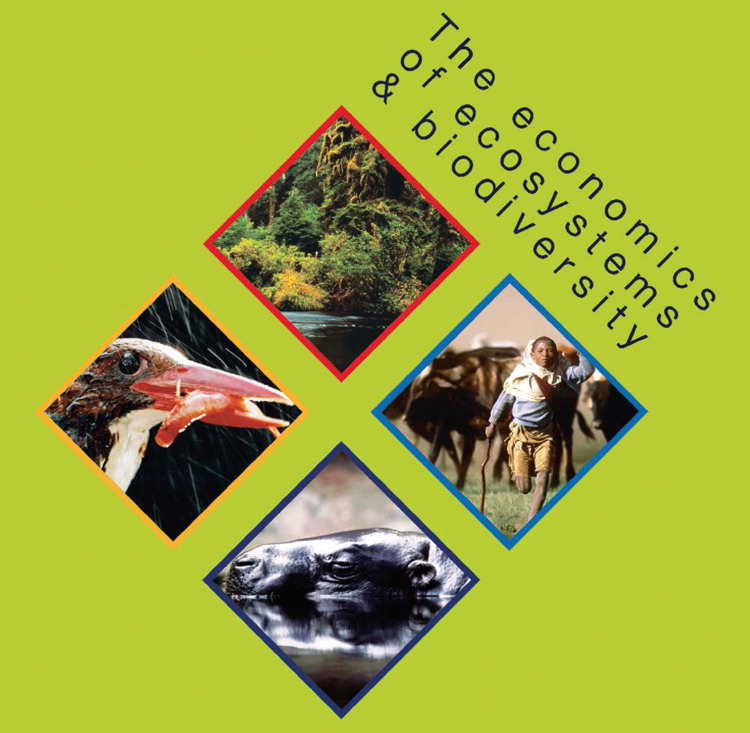 |
|
Graphic elaboration of Karl Marx (engraving), by Robert Diedrichs, 1970
|
Capital is still a term thought to be confined to the realm of economics and finance. However, there also exists a natural capital without which no kind of development and welfare for human society are possible. For the last few years, sustainability studies – not economic ones – have been leading the way in the most innovative research around this concept, possibly changing completely its identity and perception.
For the first time ever, in 2012, a world atlas was realized on the use of resources and the efficiency levels that has characterized this use in all countries of the world in the last 30 years.
At the core of the report Green Economies Around the World? Implications of Resource Use for Development and the Environment – edited mainly by researchers from SERI (Sustainable Europe Research Institute; seri.at/en) – there are not only abiotic resources, such as fossil fuels, minerals and metals, but also several biotic resources, such as those coming from agriculture, forestry and fisheries, which are critical in analysing the use of natural capital. Iron, gold, sand, coal, oil, wood, rice and many other resources represent, as we all know, the basis of the economic welfare of modern consumeristic societies.
The result of this research shows that human beings are currently extracting resources from our planet’s natural systems at the highest pace ever recorded and that the economic system increasingly depends on the input of natural resources. This is demonstrated by the fact that global consumption of materials nearly doubled from 1980 to 2008, reaching almost 70 billion tons (a nearly 80% increase). To be precise, we moved from 38 billion tons in 1980 to 68 billion tons in 2008.
SERI, together with other research centres, has been working for a few years on the analysis of the flows of raw materials that cross the whole of the global economy, contributing to the creation of the website www.materialflows.net.
The differences in increments of per capita consumption of raw materials show that the constant high level of consumption of rich and industrialized nations is now accompanied by growing material consumption in emerging economies, such as China and Brazil. Globally, the level of resource usage has increased at a higher rate than population growth. At the global level, a person uses an average of 10 annual tons of resources (2008 data): in Europe the average is around 15 tons and in rich oil-exporting countries it can even reach 100 tons. At the other end of the scale, in Bangladesh, for example, the per capita average consumption only amounts to two annual tons.
In the last few years, significant international programmes have been initiated, which have stressed the value of nature and the importance of natural capital also in flows of matter. TEEB (The Economics of Ecosystems and Biodiversity, www.teebweb.org) represents the biggest and most renowned international effort to systemize all data and knowledge acquired so far on the value of biodiversity and ecosystems for human economy. TEEB’s objective is to provide a clear and operational framework for institutions, politics, the economy, businesses and civil society in general, in order to help them evaluate and integrate the combined value of natural ecosystems into human economy.
What is TEEB?
Born out of the proposal by the German government on the occasion of the environment G8 in Potsdam in 2007, TEEB has then been patronized by the United Nations under the UN Environment Programme (UNEP) with the economic support of the European Commission and several governments (Germany, UK, The Netherlands, Norway, Belgium, Sweden and Japan). The programme has been led by Indian economist Pavan Sukhdev (see interview by Marco Moro in this issue of Renewable Matter), who has also been coordinator of the Green Economy programme of UNEP.
TEEB clearly documents how natural capital represents the basis for our economies. The invisibility of the value of biodiversity in economic research has, unfortunately, encouraged the inefficient and destructive use of natural systems, which have not been properly taken into account. Biodiversity in all its dimensions, the quality, quantity and diversity of ecosystems, species and genetic make-up, need to be preserved not only for social, ethical and religious reasons but also for the economic benefits of present and future generations.

TEEB follows the Millennium Ecosystem Assessment (www.millenniumassessment.org/en/index.html), the biggest planetary assessment on the health state of ecosystems and the services they provide to our economy and welfare, which was patronized by the United Nations and made public in 2005 documenting in detail the vulnerability and degradation to which we have led the earth’s natural systems. TEEB has represented a further advancement towards the awareness of the importance of the value of biodiversity and ecosystems in the life and survival of the entire human species.
TEEB was created after a series of very important studies, researches and analyses carried out in the last few decades, which led to the foundation in 1988 of the International Society for Ecological Economics, ISEE (www.ecoeco.org) – an interdisciplinary organization which has played a very important role in advancing discussion, research, analysis, culture and knowledge of a new economy strongly based on ecology.
If today we go back and read the special issue of the journal Ecological Modelling from 1987, a year before the birth of ISEE – which was entirely dedicated to ecological economics and coordinated by two scholars who have played a strong role in promoting this discipline, Robert Costanza and Herman Daly – we find in a nutshell many of the very important subjects that developed later.
This group of scholars who integrate TEEB is aware of the difficulties in providing monetary evaluations to services that ecosystems offer to the welfare and economies of human society. They have nonetheless tried to organize the bulk of studies and analyses that had been produced, recommending a series of guidelines that can be found in an extensive form on the website www.teebweb.org but that we can summarize as follows.
1. Make the value of nature visible: it is necessary that decision makers at all levels are aware of the role of biodiversity and ecosystem services and that they are able to estimate their value and communicate it.
2. Assign a price to what today is priceless: it is necessary that decision makers include benefits and costs of natural systems’ conservation and regeneration in their evaluations.
3. Accept that there are risks and uncertainties: the “insurance” value of ecosystems in a healthy condition must be an integral part of the analysis of the total economic value.
4. Consider the future: it is necessary to use zero or negative discount rates in relation to the value of the natural systems that are evaluated, taking into account the levels of uncertainty and the aim of the projects and policies that are being analyzed.
5. Measure to its best, to manage at its best: it is necessary that current national accounting systems include as soon as possible the value of the changes in stock of natural capital and in flows of ecosystem services. Governments need to rapidly elaborate and apply sets of indicators that are useful in monitoring changes in physical, natural, human and social capital.
6. Natural capital and reduction of poverty: dependence on ecosystem services is particularly significant for many poor people in the world and therefore needs an urgent integration in the politics of poverty reduction.
7. Go beyond the minimum levels: current mechanisms and procedures and reporting standards do not pay the necessary attention to environmental and social externalities. It is critical to integrate and incorporate biodiversity and ecosystem services in businesses’ production chains.
8. Modify the incentives: a reform of incentives and fiscal systems is necessary, which aims to eliminate perverse subsidies – which destroy biodiversity – and generate a fiscal system which penalizes the excessive use of resources and their destruction.
9. Protected areas also constitute an economic value: it is necessary to establish a comprehensive, representative and efficient system of national and regional protected areas, with the aim to protect biodiversity and maintain a wide range of ecosystem services.
10. Ecological infrastructure and climate change: it is necessary to invest in “ecological infrastructure”, acting to safeguard the irreplaceable role of ecosystem services as well as ecological regeneration due to human action. Ecosystems’ conservation and regeneration represent an important choice of investment also in the context of climate change.
Before and After TEEB: How Much is Natural Capital Worth?
In 1997, the prestigious scientific journal Nature published an article which made history, “The value of the world’s ecosystem services and natural capital”. 13 scholars of natural systems and their economic evaluation, led by Robert Costanza, made their investigation public, which estimated the value of 17 ecosystem services (from climate regulation to water cycles, from pollination to soil formation etc.). The figure was based on the gathering of all the studies published at that time and on some original calculations. It was quantified in a range of 16,000 to 54,000 billion dollars a year, with an annual average of 33,000 billion dollars.
In 2002, in another research published on Ecological Economics – the specialized journal of the International Society for Ecological Economics – Bob Costanza and other scholars presented the results of the application of a unified model, which simulates the biosphere of our wonderful planet, defined GUMBO (Global Unified Metamodel of the Biosphere). In the analysis of the value of seven ecosystem services (from soil formation to nutrients’ recycling) for the year 2000, an evaluation of about 180,000 billion dollars emerged.
In 2014, the same Bob Costanza and other ecological economists, among whom figured another TEEB leader, Rudolf de Groot, published on the journal Global Environmental Change a new study – “Changes in the global value of ecosystem services” – which updated the information contained in the 1997 paper and which shows that the estimate for ecosystem services at the global level in 2011 is between 125,000 and 145,000 billion dollars a year. This study also estimates the economic value of the loss of ecosystem services from 1997 to 2011 due to changes in the use of soil, providing a figure of 4,300 to 20,200 billion dollars.
TEEB recommendations represent a very good operational base to make sure that economic systems can finally assign value to natural capital. The inclusion of these principles in governmental and business policies and strategies is key to the success of innovation processes such as those described in this publication. For this reason it will be important to continue documenting and disseminating the constant developments taking place in this crucial field of research.
From the next issue of Renewable Matter, a new section entirely dedicated to these complex but fascinating issues will start.


